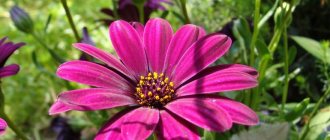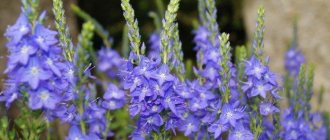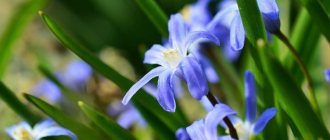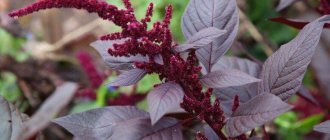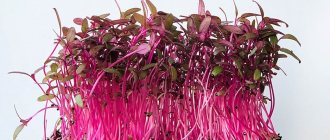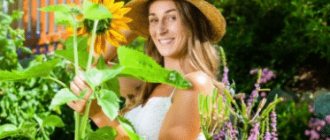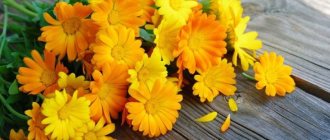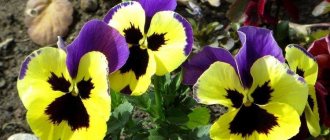History of the name
The bulbous herbaceous perennial plant ornithogalum, or ornithogalum, is a representative of the hyacinth subfamily of the asparagus family. Under natural conditions, it can be found in the subtropical and temperate regions of South Africa, the Mediterranean and Western Asia. 1 species of Ornithogalum grows in South America, several in Eurasia and 4 in North America.
In total there are approximately 150 species of poultry. The Latin name of the plant consists of two words: “ornis”, which translates as “bird” and “gala” - meaning “milk”, resulting in “bird milk”. This plant has very unusual star-shaped flowers, due to which it is called the “star of Bethlehem” or “Star of Bethlehem” in England, and “milk star” in Germany.
Poultry farmer
Taxonomy
The position of the Poultry Plant in the classification often changed; until recently, the genus belonged to the Liliaceae. More recently, the genus was assigned to its own subfamily Ornithogaloideae of the Hyacinthaceae family. Depending on the author of the classification, the number of species described varies; some subspecies are considered as species. In total there are from 100 to 300 species; about 30 species are found in Russia and neighboring countries.
Sometimes the genus is divided into three subgenera: Ornithogalum subg. Ornithogalum, Ornithogalum subg. Myogalum and Ornithogalum subg. Beryllis.
Poultry plant - what kind of flower, a brief description of what it looks like
The plant is a bush 0.3-1.20 meters high. A rosette of belt-shaped leaves grows at the top of the bulb. Their color can vary from bluish-greenish to dense green. In most cases, there is a longitudinal light line on the leaf blade.
Flowering bird's eye
A long peduncle grows from the rosette, which ends in a racemose (sometimes umbrella-shaped) inflorescence. Depending on the variety, the brush can be dense or loose and consists of flowers from 20 to 100 pieces. The buds are predominantly white, but come in various shades of orange or yellow. The tepals have a green stripe along the edge.
Interesting! The fruit is a capsule with flat-oval black seeds.
Botanical description
The height of an ornithogalum bush can vary from 0.3 to 0.85 m. The diameter of the bulbs is 2–5 centimeters, and their shape can be ovoid, round or oblong. Their surface has dense covering scales. The Indian onion bulbs themselves are not edible, but are used in the preparation of tinctures, steams and juice. The poison content in them is much higher than in the leaves.
Umbelliferous ornithischium and Drooping ornithischium. Botanical illustration from the Gottorfer Codex, 1649–1659
The basal leaf plates of a belt-like or linear shape with a whitish central vein grow somewhat earlier than the flower shoots. There are species in which foliage grows in autumn, and it remains on the bush in winter, and dries out in summer.
Its leaves are narrow and lanceolate-belt-shaped. They can be from 2.5 to 3 centimeters wide. They reach a length of 60 centimeters. The structure of the leaves is delicate; when cut, they secrete a jelly-like juice. The leaves never stand straight, but curl slightly, and therefore in some cases (when you want to give the plant a decorative look) they require supports, and not just one, but several at once.
Looking at the plant, you will notice that the tips of its leaves are most often slightly curled into a tube. Moreover, at the very edge the tip usually dries out, but the base continues to grow, and this is quite normal. There is no need to panic and start thinking that the caudal bird needs increased watering. Nothing of the sort - he feels great.
The peduncle is dense, up to 90 cm high. The inflorescence is multi-flowered, racemose or corymbose. Flowers 1–3 cm in diameter, wide-open, almost star-shaped, white or yellowish with a green back; there are yellow, yellow-brown and even red lead.
Racemose or corymbose inflorescences consist of light yellow or white flowers, they have no aroma, but a green stripe runs along the front surface of the tepals.
The flowering time for this plant is mid-October and the first half of November. Sometimes deviations from this schedule are possible. Most often they are associated with climate change, with its sharp warming, especially in the winter season.
The fruit is a capsule containing flat, round, black seeds.
Indian onions shoot only in the third year after planting, so you should not expect flowering in the first years after transplanting the bulbs into separate pots. The length of the arrow itself can reach 1 meter. Indian onion seeds are formed only after the flowers are pollinated, so at home the poultry plant must be pollinated artificially, otherwise fruiting will not occur.
birdflower flower
Growing conditions
- Growing temperature: in spring and summer, poultry is kept at a temperature of 18 - 22 ° C.
- Lighting: shading from direct sunlight during the day; in the morning and evening, plants can take sunbaths.
- Watering and air humidity: abundant and rather infrequent watering even in the warm season. In autumn and winter, the frequency of watering can be reduced. Air humidity is high.
- Features: after flowering, if the peduncle dries out and turns brown, it is removed, but if the peduncle does not die, then it is left on the plant and it is covered with buds again. In this case, only peduncles that are too long should be pruned.
- Soil: a nutritious and loose substrate that easily allows not only moisture, but also air to pass to the roots of plants.
- Feeding: in the warm season - once a month, fertilizing with mineral fertilizers for flowering plants.
- Reproduction: by separating daughter bulbs - much less often - by sowing seeds.
Properties and applications
Poultry plant or ornithogalum has its own external characteristic features that distinguish it from other crops.
We are not talking about all types of plants, but specifically about the crested poultry plant, which is popularly called Indian onion. In this species, not only the bulbs have healing properties, but also all other parts of the plant, even the flowers. These properties appear already in the second year of the plant’s life.
Beneficial features
Poultry plant has analgesic, wound healing and antimicrobial effects. The healing properties of poultry plant are manifested in the fact that it promotes the healing of wounds and bruises, relieves swelling, inflammation and pain in the joints, treats headaches, and removes salts from the body. Due to the high content of phytoncides, the indoor poultry plant disinfects the air in the room.
Meaning and Application
Some species are poisonous. The toxicity is due to the content of cardiac glycosides and possibly unidentified alkaloids. The bulbs of the Pyrenean poultry plant are eaten fried and pickled. The sprouts of certain species are suitable for eating like asparagus.
Ornithogalum candicans is grown as a potted plant. This large plant with a peduncle reaching 1-1.3 m in height is grown in pots. In May-June, more than 20 drooping bell flowers up to 4 cm long grow on each stem. Narrow leaves reach 70 cm in length.
According to Feng Shui theory, such a plant promotes career growth, patronizes business and labor success. Helps to build harmonious, respectful relationships between children and their parents, improving relationships with teenagers. Symbolizes prosperity in the home. Attracts positive energy, cleanses the surrounding atmosphere from negative influences.
Correct preparation
To use Poultry Plant for medicinal purposes, you need to prepare the raw materials in advance. You can use all parts of the plant - leaves, bulb, flowers, juice from the leaves. The main thing is to make sure that a certain species is not poisonous.
There are no specific recommendations for harvesting time - if the plant is domestic and grows on a windowsill, then the raw materials will always be at hand. For species that grow in the garden, summer and autumn are suitable.
When preparing raw materials, you need to wear gloves and a mask and do not allow the juice to get into your mouth or eyes, since in its pure form it is toxic.
Folk recipes
The plant is used in the preparation of water and alcohol infusions, decoctions, compresses, and gruels.
- Headache and migraine: rub a few drops of juice into the temples, back of the head and shoulders.
- Runny nose: rub a small amount of freshly squeezed juice into the bridge of the nose and wings of the nose. Rub in up to 3 times a day in the initial stages of the disease.
- Sore throat: it is better not to make a decoction, as the product may get inside. Therefore, a compress is prepared. It is necessary to cut the leaves of the flower and pour them with warm boiled water in a ratio of 1:10. Keep in a water bath for 10-15 minutes. After preparing the infusion, soak a bandage in it, wrap it around your throat and leave for 3 minutes.
- Joint pathologies: for treatment you will need to prepare an ointment for external use based on fat, petroleum jelly or oil. The ointment should be prepared for one use, as it cannot be stored for a long time. You need to take 1 part of olive oil and Vishnevsky ointment and 0.5 parts of fir oil and freshly squeezed Ptitsemlechnik juice. Combine ingredients and rub into sore joints.
- Radiculitis: an alcohol tincture is prepared to relieve radiculitis. You need to take one adult Poultry Plant and grind all its parts (bulb, leaves, stem) in a meat grinder. Pour the resulting slurry with 200 ml of vodka and leave for a week. Then strain the resulting mixture and rub it into your back.
Use for cosmetic purposes
In cosmetology, Poultry Plant is used to remove hardened skin and increase the speed of metabolic processes.
In the role of masks and tonics for the face, Poultry Farmer effectively relieves inflammation and dries out problem skin.
- Balm for face and neck: you need to take the flowers and leaves of the plant and mix them with vodka in a ratio of 1:20. Leave the product in the refrigerator in a dark container for 50 days, then strain.
Further apply in the form:
- Compress - put napkins soaked in the product on your face and neck, wrap a scarf on top. After 20 minutes, remove and wash off any remaining product from your face.
- Masks - mix the infusion, white clay and water until you obtain a porridge-like consistency. Apply to face, wait 15 minutes and then rinse thoroughly.
- Tonic – for wiping the face with cotton wool.
Contraindications for use
You should not use Poultry Farmer in any form for:
- hemophilia – a blood clotting disorder;
- renal failure;
- pregnancy and breastfeeding;
- individual intolerance to the drug or if allergic reactions occur;
- children under 18 years of age.
- The plant should only be used externally.
When preparing medicinal products, be careful - wear rubber gloves and a mask so that the flower juice concentrate does not get into your eyes, mouth, nose or skin.
If the juice does get on the mucous membranes, it is necessary to thoroughly rinse or rinse the area with a weak soda solution. At the first signs of poisoning or allergy, you should immediately consult a doctor.
Growing in open ground
The poultry garden is easy to care for and plant, so it is suitable for gardeners of any level.
Boarding time
The poultry plant is planted in September (in the south - in October) to a depth of 6-10 cm with a distance of 7-8 cm. Plantings should be covered for the winter. During the growing season, caring for plants is the same as for other spring bulbs. They are fed after the snow melts, during budding and after flowering. Without replanting, they cultivate in one place for 5-6 years.
Planting technique
The procedure for planting a poultry plant in open ground is carried out in several stages:
- Before planting, the bulbs are inspected for damage and spots of rot. If such planting material is detected, it is pickled for half an hour in a solution of the “Maxim” or “Vitaros” series or ordinary potassium permanganate.
- The planting area is dug up using a shovel, adding organic fertilizers or complex compounds. Peat or sand is added to heavy clay soil to improve the structure.
- The bulbs are planted at an equidistant distance from each other, following the rule of three. The distance from the bottom to the surface of the earth should correspond to three times the height of the bulb itself. When working with heavy soil types, planting depth is reduced by 20%.
- The planting area is leveled to reduce the likelihood of water stagnation and watered.
- With the onset of frost, the place where the bulbs are planted is mulched using dry leaves, pine needles or agrofibre.
Application in landscape design
In garden design, the bird's eye flower is used to decorate the front edge of mixborders and multi-tiered flower arrangements. The herbaceous bushes of the Stars of Bethlehem also fit harmoniously into the design of rocky hills: rock gardens and rockeries.
Poultry plant goes well with spring-flowering muscari and daffodils, irises and tulips. Even after the buds fade, the long lanceolate leaves of the plants remain decorative until mid-summer. To cover the withered leaves of the herbaceous shrub in the second half of summer, it is often planted in close proximity to hostas, daylilies and peonies.
Low species of ornitholagum will decorate a green grass lawn, especially since this perennial plant does not need annual replanting. The efforts to plant and care for the poultry plant will not disappoint; during the flowering period, amazing snow-white “clouds” will appear on the site. Flowers do not fade for a long time after cutting, they can be safely used for bouquets.
Landing
For ornithogalum, soil composition does not play an important role. However, in a fertile substrate it will develop more intensively. The soil should be light and well permeable to water. To avoid stagnation of moisture, which is detrimental to the flower, a drainage layer is placed at the bottom of the pot. The latter can be made from fine gravel and brick chips. Planting depth is twice the height of the bulb.
Planting in open ground is also possible; caring for the flower in the future will not be difficult. If the gardener decides to decorate the area with an unusual flower, the timing should be determined. In most areas, they occur in the spring, when the soil warms up to 8-10 °C and stable heat sets in. In the southern regions, bulbs are planted in open ground at the end of August or beginning of September.
Agricultural technology
Caring for the bird's eye plant does not cause much trouble - even a novice gardener can handle it - the unassuming plant will certainly delight its owner with a scattering of unusual stars among the emerald foliage.
Soil selection
Prefers fertile, well-drained soils with a neutral reaction, but is tolerant of poor soils. This crop grows well on sandy soils. Does not tolerate excess moisture. And this provokes the rapid development of fungal infections and the rapid death of the flower.
Lighting
The appearance and health of the poultry farmer depend to a large extent on lighting. The plant will grow in shade, but is more comfortable in moderate light.
If this is not possible, the plant requires periodic “solar treatments”, the essence of which is to move the pot to a bright window for several days, which will help partially compensate for the lack of light.
Of course, you shouldn’t place it in direct sunlight, especially in the hot summer, but you can gradually accustom it to street air in order to take it out to the balcony in the summer or transplant it into open ground. It should be borne in mind that the plant does not tolerate transplanting back into the pot, but you can plant new “baby” bulbs, of which a considerable amount is formed under these conditions.
Temperature
The poultry plant does not require a hot microclimate in the room in which it grows. Tolerates room temperature well. But in a cold room, the plant will always “think” that it’s time to go into hibernation, so don’t expect it to grow not only wildly, but even to grow at all in such conditions. This African is thermophilic, so in winter the room temperature should not be lower than 12-15 degrees.
Watering
You need to water the flower as the top layer of soil dries. The plant responds well to spraying with water at room temperature. As for excessive soil moisture, it can be detrimental to the poultry farmer.
Drought-resistant; do not allow stagnation of water, otherwise the bulb will get sick or rot. But lack of water can cause it to dry out. In this case, the leaves can also suffer, and without them there can be no talk of any decorative effect. Regular moderate watering is required. You should focus on the condition of the soil; if it is slightly damp for a long time, you need to water less often.
Ornithogalum ornithogalum orange
In winter, watering should be less intense and more rare, especially if the room is cool. If the room is hot, then you need to water more often (when the top layer of soil is completely dry). It is recommended to wipe the leaves with a sponge or bathe in the shower.
It does not require high air humidity, but excessive dryness causes yellowing of the leaves. It is sometimes necessary to spray the air and the plant itself with warm water.
Overdoing it with spraying can lead to unpleasant consequences, so there is no need for fanaticism here, especially if the room has moderate humidity.
The condition of the plant can be an indicator of the frequency of watering. By the way, it can withstand extreme conditions, but not often, for example, it can last two months without water, after which, of course, it will have to be resuscitated, but it will not die completely, but will only go into hibernation.
So, if you urgently left somewhere for a long time and forgot to make sure that someone watered your indoor plants, the poultry farmer will completely survive this “shock.”
Feeding
When growing in the garden, fertilizing is not necessary, especially if the soil is fertile. But the “room dweller” requires systematic feeding with complex fertilizers. Both mineral and organic fertilizers are suitable.
Once every 3-4 months, the plant can be watered with a solution of potassium permanganate or coffee beans, an infusion of citrus fruits or wood ash. Remember that if the plant does not have enough nutrients, it will not only look unattractive, it will also affect its “well-being”. The immune system will weaken, increasing the likelihood of illness and death.
Transplantation
Growing and caring for poultry requires timely transplantation of the plant. The longer the bulb is in the ground without replanting, the more it becomes overgrown with babies, and this does not improve the appearance of the plant. When is the best time to replant poultry grass? A flower can grow in one place for no more than 6 years, but it is better to dig it up and replant it once every four years. The children separated from the mother bulb are planted in bright sun or in the partial shade of trees. You can do this at the end of summer, or in spring.
Photos of Ptitsemlekhnik
Caring for poultry in the garden
There is nothing complicated in caring for ornithogalum. It just needs to be watered regularly and moderately. If water stagnates in the soil, rot will appear on the bush, the inflorescences will die, and the leaf blades will turn yellow. Watering should be reduced during flowering and the appearance of seed pods. Depending on the species, such a plant begins to bloom from the first to the last days of May; the flowering duration is about 20 days.
In autumn, it is recommended to feed this flower using organic fertilizers. However, if the soil in the area where it grows is saturated with nutrients, then fertilizing may not be necessary.
In some cases, spider mites appear on bushes. Insectoacaricides are used to destroy it. Also, aphids sometimes settle on this plant, which can be gotten rid of using such means as Antitlin and Biotlin. However, do not be alarmed; caring for this flower is relatively simple.
Transfer
In order for the plant to develop normally, it needs to be replanted in a timely manner. If the plant is not replanted for a long time, then the bulb will have many children, and this will negatively affect the appearance of the plant. A poultry farmer can survive without transplants for no more than 6 years, but experts advise carrying out this procedure once every 4 years. When transplanting, children must be torn from the bulb and planted in a new permanent place, which can be sunny or shaded. It is recommended to carry out this procedure in the last days of summer or in spring.
Poultry breeding
It has already been said that such a flower can be propagated both by children and by the generative (seed) method. It should be remembered that the seeds need stratification, which should last 3 or 4 months; therefore, they are sown in open soil before winter in prepared grooves of shallow depth. In spring, seedlings should appear. If desired, the poultry plant can be grown through seedlings. Sowing of seedlings should be done in early spring. To do this, you can use plastic glasses or a container. To fill the container, use light and loose soil. After 3 or 4 true leaf blades appear, you need to start hardening the seedlings. To do this, they must be taken out into fresh air every day for 16–18 days, while the time the seedlings spend outside must be gradually increased. Planting is carried out only when the plant can be in the fresh air around the clock.
Growing at home
To care for poultry plants indoors in winter, select large, healthy bulbs with a diameter of more than 2 cm. The substrate must be fertile and sandy loam (flower soil mixture sold in stores is suitable). In September, 3 pieces are planted in a pot with a diameter of 15-20 cm, deepened so that the neck of the bulb is visible. Planted plants are kept in a cool place, perhaps in the yard or on the balcony.
With the arrival of sub-zero temperatures, the plants are brought into a cool room. In January, the pots are moved to a warm room, after 4-5 weeks the plant is ready to flower. At this time, moderate watering is required.
During active growth and during flowering, plants need regular watering and fertilizing with a solution of complete mineral fertilizer 2 times a month. After flowering ends, watering is reduced until the leaves begin to die. Then watering is stopped and the plant is stored in this state until autumn.
In the fall they do transshipment. Large bulbs are planted to produce flowers, and small ones - several pieces per pot for growing.
Soil, lighting and humidity indicator for a flower
Initially, seedlings are planted in prepared soil. The ideal mixture would be per 1 sq. m:
- 10 liters of humus and peat;
- 5 liters of rotted leaves (or leaf soil);
- 3-4 liters of river sand;
- 2-3 liters of vermiculite.
In the future, until the next transplant, you can completely do without fertilizing.
For successful growth, the culture needs bright light and no stagnant water. A hilly, sunny area would be optimal.
In autumn, plantings do not require watering or fertilizing.
Feeding and watering
After the snow melts, the seedlings are cleared of mulch. Further care consists of regular watering and weeding. Fertilizers are not required this season.
In the next season, nitroammophoska is used (scattered) as a top dressing in a dosage of 25 g per square meter. After the formation of buds and until the end of flowering (twice a month), superphosphate can be added to the water for irrigation. 15-20 ml bucket of water is enough.
Pruning after flowering
Autumn pruning of the plant is carried out only after the above-ground part, that is, the peduncle and leaves, has dried. Before drying, they transfer to the bulb all the beneficial juices necessary for wintering and laying flower buds.
Important! Under no circumstances should the very top of the bulb be injured. The plant may die.
Reproduction
The African bulb can be propagated by three methods: baby bulbs, seeds, and dividing the bulb.
Cuttings
Cuttings from poultry plant allow you to grow young and strong plants in a relatively short time. To obtain cuttings, a five to seven year old plant is dug up, cleared of soil and dried in the sun. Then the daughter bulbs with already formed roots are separated from the large onion. Then all that remains is to plant them in a sunny or semi-shaded area.
Seed method
Reproduction of poultry from seeds is a very labor-intensive and troublesome process. Nevertheless, some gardeners resort to it. Before sowing (about three months), the seeds are placed in the refrigerator to stratify them. Sowing is done in a mixture of sand and peat and covered with film, periodically ventilated. The soil is moistened from time to time with a spray bottle. Shoots appear with the onset of spring. After this, remove the film and wait for the young shoots to get a little stronger. Then it is transplanted into separate pots and grown until next spring.
Children's department
The method is convenient in that it allows you to get dozens of new plants in just one season. The bulb of the culture forms up to 30 “children” per season. Planting material is obtained by dividing the nest at the stage when the outer scales covering it are completely dry. The bulbs are dug up in the second half of summer, when the old roots have already died and new ones have not yet formed. The procedure is best performed in dry, sunny weather.
You can visually determine which of the bulbs is a full-fledged “adult” and which is a “baby” by their shape. The former have a symmetrical round shape, the latter are one-sided flat.
When choosing a vegetative method of propagating poultry plants, it is worth considering that in order to obtain a larger number of daughter bulbs, the bushes should initially be planted in sunny areas. This is due to the fact that when shading, the number of daughter bulbs is reduced several times, and their sizes are significantly smaller. “Baby” bulbs bloom in the second year after growing.
How to plant poultry gardens - basic methods
For the culture, planting once every 4 years is optimal. This means that small onions with roots (babies) are torn off from the mother bulb and transplanted to a new place. The procedure can be carried out both in autumn and spring. In the second year, flowers will appear on young plants.
Poultry Seeds
The second method of breeding flowers is generative, or seed.
Important ! Seed material must be stratified for at least 3 months.
Natural hardening of seeds occurs during their winter sowing. During the winter they harden well and sprout in the spring.
They are also used to produce seedlings. Stratified (refrigerated) seeds are sown in early spring in containers with loose soil. With the appearance of 2-3 pairs of true leaves, you can begin hardening off the seedlings, which will last about 20 days. Then they are planted in a permanent place. The plants will begin flowering in the fourth season.
Need to know ! Baby bulbs retain their parental qualities, but seed seedlings do not.
The poultry plant is an original and incomparably beautiful primrose. He doesn't care about climate changes. It will bloom beautifully anywhere except in permafrost areas.
Flower in landscape design
One has only to plant it in your garden once and it is no longer possible to imagine it without shining stars. In addition, poultry plant is universal for use in landscape design. With its early flowering, it can serve as a cover for plantings that have not yet blossomed. Brushes with large star-shaped flowers can decorate any area and give a head start to recognized spring favorites such as tulips and hyacinths. The plant is one of the first to bloom and leads the marathon of flowers on the site.
Diseases and pests
If the flower rapidly turns yellow and withers, this is the first sign of excessive watering. It is necessary to destroy plants that have begun to rot, treat the area with fungicides and establish a regime.
Onion rattles, mites and nematodes are sometimes found. To avoid this, always inspect and treat planting material with antiseptics and insecticides.
Insects - pests
| Insect name | Signs of infection | Control measures |
| Nematodes | The leaf blades turn yellow in places located between the veins, then turn brown and black. Eventually the leaves fall off the plants. When the root system is damaged, the plant becomes weak and withers before our eyes for no apparent reason. | Traditional methods: destruction of infected parts of plants, abundant watering with hot water at a temperature of about 70°C, hot bath - immersing the pot in a large container of water at a temperature of 55°C for 20 minutes. Chemicals: anthelmintics. |
| Spider mite | Inconspicuous cobwebs on the leaves, yellowing and falling leaves with extensive damage. The surface of the leaf plates becomes dead and covered with small cracks. Plant development slows down. | Folk methods. Plants can be washed in the shower and left in the bathroom in a humid atmosphere for half an hour. Irradiation with an ultraviolet lamp every week for 2 minutes. Chemical preparations based on pyrethrum, sulfur powders, Fitoverm, Actellik. |
| Aphid | Sticky droplets appear on the leaf blades, the leaf blades curl and become deformed, tender buds and young leaves wither. Colonies of insects can be seen on the tips of shoots, buds or the underside of leaf blades. The flowers of plants affected by aphids may become deformed. | Folk methods: nettle infusion, decoction of rhubarb leaves, wormwood, soap solution, infusion of tobacco and dandelion, onion, marigold, yarrow, tansy, dusting with virgin ash. Chemicals: Sulfur powders, treatment of green mass with green potassium soap without getting into the ground, Decis, Actellik, Fitoverm. |
| Onion mite | The leaves become limp, often lose their shape and become covered with light spots. A white coating appears on the bulbs and tubers. | Traditional methods: hot water baths, treatment with soap solution, potassium permanganate solution, diluted alcohol, soaking in garlic infusion, decoction of cyclamen tubers, nettle leaves, treatment with an ultraviolet lamp. Chemicals: based on pyrethrum, sulfur powders, Fitoverm, Actellik. |
Popular varieties
Most species of poultry are grown in the garden, enduring cold winters and blooming their snow-white stars with the onset of spring. The exception is poultry plant, which has an unusual petal color - bright orange or yellow, which is suitable for indoor conditions.
Yellowish
Poultry yellow
The leaves are few and quickly dry out. The tall, about 1 m, peduncle bears original flowers of a dull, dirty yellow color. Blooms in late May - early June. Originally from Crimea.
Husson
Husson's poultry farmer
It is similar to the umbrella plant, but differs in narrower leaves, 1-3 mm wide, and in that the pedicels stick out obliquely upward, and not to the sides. It is easily accessible in nature - along the steppes and wastelands it reaches north to the Voronezh region.
Arab
Poultry Arabian
Originally from the Mediterranean. In nature, it can be found in Israel, where its name in translation sounds like “hawk's milk.” The linear light green leaves of the plant form a basal rosette. The peduncle reaches 85 cm. White flowers up to 5 cm in diameter on long pedicels form a loose, few-flowered inflorescence. The species has been in culture since 1574.
Fringed
Fringed Poultry Farmer
A low-growing variety with a height of no more than 15 cm. The leaves are linear, shaped like a sickle, pubescent on top, up to 10 cm long, up to 0.4 cm wide. The flowers are white, 2 cm in diameter, enclosed in an inflorescence - a corymb of 6 - 8 pieces.
Lanceolate
Ornifolia Lanceolifolia
Easily recognizable by the inflorescence sitting at soil level in a rosette of outstretched shiny leaves. The flowers are pure white on the inside and have a wide green stripe on the outside. One of the first to bloom. After flowering, the pedicels practically do not stretch. Originally from Turkey and Syria, where it grows on dry rocky slopes.
Boucher
Poultry farmer Boucher
Distributed in river valleys in the Balkans, the European part of Russia, Moldova and Asia Minor. The species was named in honor of P.K. Boucher, botanist at the Berlin Botanical Garden in the first half of the 19th century. This plant is no more than 50 cm high with linear bright green grooved leaves 5 to 15 mm wide with a longitudinal light stripe along the inside. Flowers with tepals wavy along the edges are collected in a brush of 20-50 pieces.
Doubtful
Poultrykeeper Doubtful
Perhaps the most striking representative of ornithischians is a compact herbaceous plant up to 30 cm high. The leaves are dark green, thick, fleshy, oblong-triangular, covered with a bluish waxy coating, reminiscent of tulip foliage. The peduncles are erect, 30 - 40 cm high. Each peduncle bears at the top up to 15 - 20 brightly colored orange flowers with 6 wide petals. The center of the flowers is often dark brown, and the buds open sequentially from bottom to top. Flowering occurs in spring.
Flat-leaved
Orniculture Flat-leaved
Heat-loving species of ornithogalum. Reaches up to 20 cm in height. The leaf blades are erect, glossy, with elongated tips, up to 20 cm long, rich green in color. The flowers are white, 3.5 cm in diameter, collected in corymbose inflorescences of 15–20 pieces.
Fisher
Fisher's poultry farmer
Under natural conditions, this species can be found in Kazakhstan, Western Siberia and the European part of Russia, while it prefers to grow on salt marshes and wormwood steppes. This species was named after a botanist who was famous in the 19th century. The height of the bush can reach 0.6 m, and the length of the racemose inflorescences is about 0.25 m, they contain from 8 to 20 flowers. On the front surface of the white leaf blades there is a narrow stripe of green color.
Drooping
Birdwatcher Drooping
Grows in Scandinavia, the Mediterranean, European Russia and the Balkans. The plant reaches a height of 50 cm. It has gray-green leaves with a whitish stripe on the inside and flowers, collected in 5-12 pieces in drooping inflorescences. On the outer side of the tepals there is a wide green stripe. The variety has been in cultivation since 1600.
Pontic
Poultry bird Pontian
Under natural conditions, it can be seen in the Crimea and the Caucasus, while this plant prefers to grow on rocky slopes, on the edges of bushes, in fields and near roads. The height of such flowers reaches almost 100 centimeters. The color of the leaf blades is greenish-gray. The length of the inflorescences is about 0.4 m, and their width is approximately 7 centimeters. Such inflorescences can contain from 30 to 95 flowers, with a narrow strip of green color running along the outer surface of the perianth leaves.
Saunders
Saunders Poultry Farmer
A large perennial plant up to 90 cm high with bulbs up to 20 cm in diameter. The leaves are oblong - xiphoid, green, often covered with a bluish waxy coating, up to 50 cm long. Peduncles are leafless, thick, vertical, bearing round inflorescences at the top with many small white or cream flowers.
Narbonne
Orivory of Narbonne
In the wild they can be found in Southern Europe, North Africa and Western Asia, and these flowers prefer to grow on clay soil. The height of the bush can vary from 0.4 to 0.8 m. The color of the linear leaf blades is greenish-gray. The racemose inflorescences can contain up to 50 medium-sized white flowers; on the outer surface of the perianth leaves there is a thin strip of green color. Flowering is observed in the first days of June.
Large
Poultry farmer Large
A plant up to 1.5 m high with light green narrow leaf blades. On a loose racemose inflorescence there are 18 - 30 milky-white flowers, each of which is 3.5 cm in size.
Pyramidal
Poultry Farmer Pyramidalny
The plant is a dense bush with a height of 40 to 100 cm. The leaves are formed at the base of the stem, have a greenish-gray color and a longitudinal white blurred stripe in the central part. Racemose inflorescences reach 50 cm in length and consist of 30 – 90 flowers or more.
Mountain
Poultry farmer Mountain
A plant up to 20 cm high with 8 – 10 dark green lanceolate leaves and an inflorescence with 6 – 15 white flowers.
Arcuate
Poultry farmer Arcuform
Perennial bulbous plants with green, thick, fleshy, oblong-triangular leaves, probably the tallest type of poultry plant. The bulb reaches a diameter of 30 cm, and peduncles can grow up to 120 cm in height. The flowers are white, star-shaped, with 6 thin, narrow petals, collected in loose inflorescences - panicles on high peduncles.
Balances
Poultry Farmer Balances
This species grows in the subalpine and alpine belts of the Caucasus and Asia Minor. This species was named after a fairly famous botanist and scientist of the 19th century - Balance. The bush of this species can reach only 0.1 m in height. The crescent-shaped grooved leaf plates can be painted olive or green. The height of the peduncle reaches only 5 centimeters; it contains 3 white flowers with a green stripe, the diameter of which is 3 centimeters.
Koch
Koch's poultry farmer
One of the smallest species of ornithischium - even adult plants do not exceed a height of 10 cm. The leaves are narrow, linear, slightly arched, dark green, glossy, often die off before the flowers appear. The peduncles are short, strong, erect, bearing several charming, silvery-white flowers. The center of the flowers is painted in a light green shade. On the outside, the flower petals remain green.
Umbrella
Umbrella poultry plant
A bulbous perennial with compact dimensions - often does not exceed a height of 30 cm. The leaves are dark green, linear, glossy, up to 30 cm long. Leafless peduncles, 15 - 20 cm high, appear when the leaves begin to die - in late spring or early summer. Each peduncle bears 15 - 20 flowers. The flowers are white, delicate, star-shaped - with 6 oblong petals, about 2 cm in diameter. On the outside, the petals have a wide green longitudinal stripe in the center.
Caudate
Tailed Birdwatcher
It is a spreading bush up to 100 cm high. The leaves are drooping, belt-shaped, bright green, up to 70 cm long. The length of the racemose inflorescences can reach 100 cm. The inflorescence consists of many snow-white flowers with a pale green stripe in the central part.
Thyrsoid
Ornithischian Thyrsoid
A herbaceous bulbous plant with a height of 20 to 50 cm. The leaves are green, linear, 15 - 30 cm long and only about 1 cm wide, and begin to die off even before flowering. The flowers are delicate, white, collected in an inflorescence - a spike at the top of a low, strong peduncle. Each peduncle is capable of bearing from 30 to 50 flowers, opening sequentially - from bottom to top. The flowering period occurs in late spring - early summer.
Sources and literature
Sources and literature
- Ornithogalum // Botanical dictionary / comp. N. I. Annenkov. - SPb.: Type. Imp. AN, 1878. - XXI + 645 p.
- Gilyarov M. S. Biological encyclopedic dictionary. - M.: Soviet Encyclopedia, 1986. - P. 518. - 831 p.
- Poultry farmer // Great Soviet Encyclopedia: [in 30 volumes] / ch. ed. A. M. Prokhorov. — 3rd ed. - M.: Soviet Encyclopedia, 1969-1978.
- Description of the poultry bird on the Wikipedia website ru.wikipedia.org.
- A. Korzunova “Indian onion and skin diseases”
- Gubanov I. A. et al. Wild useful plants of the USSR / resp. ed. T. A. Rabotnov. - M.: Mysl, 1976. - P. 66. - 360 p.
Types of poultry
Ornithogalum from the Hyacinth family is represented in nature by 150 species, which mainly grow in the tropical parts of the Americas. Single species can also be found on the Eurasian continent. Only about 10 varieties of exotic flora are grown in culture. They grow well both in open ground and at home.
Caudate
A tall perennial plant, the round bulb of which reaches 10 cm in diameter. Linear bright green leaves with a characteristic bend along the central vein grow to almost a meter. Before budding begins, a peduncle appears from the basal rosette. Height - up to 1.5 m. Each arrow is crowned with spike-shaped inflorescences formed by light green or white flowers in the amount of 30-50 pieces.
